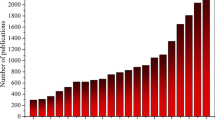Abstract
The addition of graphitic fibers and flakes as fillers is commonly used to control the thermal expansion of metals. Sintered metal matrix composites with a planar distribution of graphite flakes show a low or negative thermal expansion coefficient perpendicular to the orientation plane of the graphite (z-CTE). Since the metal matrix has a positive isotropic expansion and graphite has a high z-CTE, this effect cannot be explained by a simple model of stapled metal–graphite layers. Instead, a mechanical interaction between graphite and matrix must be considered. With neutron scattering measurements, we show that there is little or no strain of the graphite flakes caused by the matrix, which can be explained by the high modulus of graphite. Instead, we suggest that a macroscopic crumpling of the flakes is responsible for the low z-CTE of the composite. The crumpled flakes are thicker at low temperature and get stretched and flattened by the expanding matrix at high temperature, explaining the reduction in the thermal expansion across the orientation plane.




Similar content being viewed by others
References
Carlson RO, Glascock HH, Webster HF, Neugebauer CA (1984) Thermal expansion mismatch in electronic packaging. In: MRS Proc. Cambridge Univ Press, Cambridge, p 177
Zweben C (2005) Advanced electronic packaging materials. Adv Mater Process 163:33–37
Korb G, Koráb J, Groboth G (1998) Thermal expansion behaviour of unidirectional carbon-fibre-reinforced copper-matrix composites. Compos Part A 29:1563–1567. https://doi.org/10.1016/S1359-835X(98)00066-9
Sebo P, Stefanik P (2003) Copper matrix + -carbon fibre composites. Int J Mater Prod Technol 18:141–159
Ellis DL, McDanels DL (1993) Thermal conductivity and thermal expansion of graphite fiber-reinforced copper matrix composites. Metall Trans A 24:43–52. https://doi.org/10.1007/BF02669601
Rawal S (2001) Metal-matrix composites for space applications. JOM J Miner Met Mater Soc 53:14–17. https://doi.org/10.1007/s11837-001-0139-z
Russell-Stevens M, Todd RI, Papakyriacou M (2006) Thermal expansion behaviour of ultra-high modulus carbon fibre reinforced magnesium composite during thermal cycling. J Mater Sci 41:6228–6236. https://doi.org/10.1007/s10853-006-0318-y
Silvain J-F, Veillère A, Lu Y (2014) Copper-carbon and aluminum-carbon composites fabricated by powder metallurgy processes. J Phys Conf Ser 525:012015. https://doi.org/10.1088/1742-6596/525/1/012015
Yoshida K, Morigami H (2004) Thermal properties of diamond/copper composite material. Microelectron Reliab 44:303–308. https://doi.org/10.1016/S0026-2714(03)00215-4
Boden A, Boerner B, Kusch P et al (2014) Nanoplatelet size to control the alignment and thermal conductivity in copper-graphite composites. Nano Lett 14:3640–3644. https://doi.org/10.1021/nl501411g
Oddone V, Boerner B, Reich S (2017) Composites of aluminum alloy and magnesium alloy with graphite showing low thermal expansion and high specific thermal conductivity. Sci Technol Adv Mater 18:180–186. https://doi.org/10.1080/14686996.2017.1286222
Oddone V, Reich S (2017) Thermal properties of metal matrix composites with planar distribution of carbon fibres. Phys Status Solidi Rapid Res Lett 1700090:1700090. https://doi.org/10.1002/pssr.201700090
Prieto R, Molina JM, Narciso J, Louis E (2008) Fabrication and properties of graphite flakes/metal composites for thermal management applications. Scr Mater 59:11–14. https://doi.org/10.1016/j.scriptamat.2008.02.026
Firkowska I, Boden A, Boerner B, Reich S (2015) The origin of high thermal conductivity and ultralow thermal expansion in copper-graphite composites. Nano Lett 15:4745–4751. https://doi.org/10.1021/acs.nanolett.5b01664
Chu K, Wang XH, Li YB et al (2018) Thermal properties of graphene/metal composites with aligned graphene. Mater Des 140:85–94. https://doi.org/10.1016/j.matdes.2017.11.048
Hutsch T, Schubert T, Schmidt J et al (2010) Innovative metal–graphite composites as thermally conducting materials. In: Proc. Powder Metall. World Congr. Exhib. PM2010, pp 361–368
Hutsch T, Schubert T, Weissgaerber T, Kieback B (2012) Graphite metal composites with tailored physical properties. Emerg Mater Res 1:107–114. https://doi.org/10.1680/emr.11.00021
Zhou C, Ji G, Chen Z et al (2014) Fabrication, interface characterization and modeling of oriented graphite flakes/Si/Al composites for thermal management applications. Mater Des 63:719–728. https://doi.org/10.1016/j.matdes.2014.07.009
Oddone V, Segl J, Prakasam M et al (2018) Isotropic thermal expansion in anisotropic thermal management composites filled with carbon fibres and graphite. J Mater Sci 53:10910–10919. https://doi.org/10.1007/s10853-018-2373-6
Wang X, Wang X, Liu M et al (2018) Anisotropic thermal expansion coefficient of multilayer graphene reinforced copper matrix composites. J Alloys Compd 755:114–122. https://doi.org/10.1016/j.jallcom.2018.04.325
Schapery RA (1968) Thermal expansion coefficients of composite materials based on energy principles. J Compos Mater 2:380–404
Kerner EH (1956) The elastic and thermo-elastic properties of composite media. Proc Phys Soc Sect B 69:808
Turner PS (1942) The problem of thermal-expansion stresses in reinforced plastics. Natl Advis Committes Aeronaut 36:1–23
McCullough RL (1985) Generalized combining rules for predicting transport properties of composite materials. Compos Sci Technol 22:3–21
Nelson JB, Riley DP (1945) The thermal expansion of graphite from 15 c. to 800 c. Part I. Experimental. Proc Phys Soc 57:477
Blakslee OL, Proctor DG, Seldin EJ et al (1970) Elastic constants of compression-annealed pyrolytic graphite. J Appl Phys 41:3373–3382. https://doi.org/10.1063/1.1659428
Cobden R (1994) Aluminium: physical properties, characteristics and alloys. European Aluminium Association, Bruxelles
(2007) Data sheet: an aluminium alloy with the strength of steel (Alloy 7068). Advanced Metals International, Bedfordshire
DeGarmo EP, Black JT, Kohser RA, Klamecki BE (1997) Materials and process in manufacturing. Prentice Hall, Upper Saddle River
Briche G, Tessier-Doyen N, Huger M, Chotard T (2008) Investigation of the damage behaviour of refractory model materials at high temperature by combined pulse echography and acoustic emission techniques. J Eur Ceram Soc 28:2835–2843. https://doi.org/10.1016/j.jeurceramsoc.2008.04.023
Acknowledgements
We thank N. Tessier-Doyen (University of Limoges, France), Anton PJ Stampfl (Australian Nuclear Science and Technology Organisation) and Nils Stelzer (Aerospace & Advanced Composites GmbH, Austria) for helpful discussions. V. O. wishes to acknowledge the Evonik Foundation for financial support. Further, we acknowledge Benji Börner for the help with CTE measurements.
Author information
Authors and Affiliations
Corresponding author
Ethics declarations
Conflict of interest
The authors declare that they have no conflict of interest.
Rights and permissions
About this article
Cite this article
Oddone, V., Wimpory, R.C. & Reich, S. Understanding the negative thermal expansion in planar graphite–metal composites. J Mater Sci 54, 1267–1274 (2019). https://doi.org/10.1007/s10853-018-2879-y
Received:
Accepted:
Published:
Issue Date:
DOI: https://doi.org/10.1007/s10853-018-2879-y




